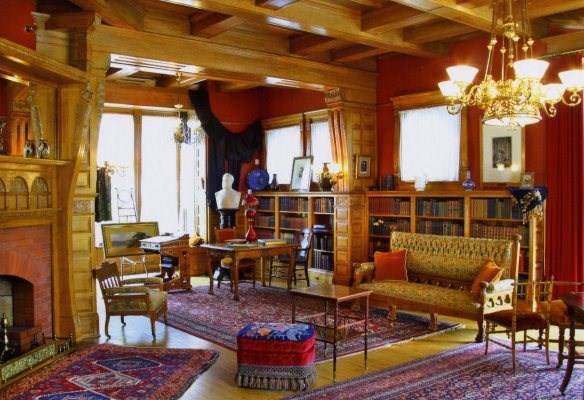Last updated: January 22, 2021
Article
Mourning President Garfield

Library of Congress
-Candice Millard, Destiny of the Republic: A Tale of Madness, Medicine and the Murder of a President
President James A. Garfield was only in office just four short months before Charles Guiteau’s attempted assassination. While his time as President was brief, his effect on the nation was not. Out of the many things that stand out about James A. Garfield, his effect on the nation is one that must not be over looked. His death has been compared that of John F. Kennedy. Both were bright, articulate, hopeful presidents who had set out to unite America.
On July 2, 1881, President Garfield became the second president to be shot. Walking through Washington, D.C.’s Baltimore & Potomac train station, heading toward his New England-bound train, President Garfield was shot twice by Charles Guiteau, a man who until recently had hoped to work for the President.

Wash drawing by delineator L.C. Corwine, Library of Congress
This mindset, the ability to relate with the general public, was one of the things the nation loved about Garfield. He was human to them, someone with whom nearly everyone could identify. He had grown up in extreme poverty in northern Ohio. His father had died young, and that left only his mother to raise him and his older siblings. He attended school, much of which he paid for by working before and after his classes. Entering the army during the Civil War, he rose up the ranks to become a Major General, only leaving to take a seat in Congress to which his fellow Ohioans had elected him while he fought. However, he remained a farmer and a family man, constantly challenging his children both physically and intellectually. These facts made him different than many of the presidents before him. His life story made him relatable to the average citizen. He welcomed all to his farm in Mentor, Ohio. During his campaign he spoke to all with the same tone of respect, regardless of their place in society.

Library of Congress
For many, President Garfield represented not just who America was, but also what it hoped to become. With his death, Americans lost the figurehead they had made Garfield, and that loss was felt by all, regardless of race, gender, or statehood. He was someone who would not tolerate discrimination but also managed to make many in the South feel as though the government was their government, too. This was something they had not felt in years. His background allowed him to connect to the pioneers heading west, while also relating to the immigrants arriving from the east. James A. Garfield was someone that many Americans not only trusted, but loved almost as family.
For 80 days, from the shooting on July 2 to his death on September 19, the public read every newspaper and waited for each bulletin from the President’s doctors hoping for news of Garfield’s recovery. With the announcement of his death, the entire nation mourned, and many traveled to the Washington, D.C. Over 100,000 people went to the nation’s capital to view the President’s body. Everyone from poor farmers to wealthy women and African American laborers came to pay their respects. Mollie Garfield, the president’s daughter wrote in her diary about how the whole city was covered in black. From the White House to the poorest homes, the city was in full mourning. Many who could not afford anything more tore up black clothing and hung it in their windows.

NPS photo
Garfield was the last president to be born in a log cabin. He was the last of many things, but the first of many more. More important than any of Garfield’s achievements during his brief presidency was the impact he had on the American people. His death truly united citizens as Americans. A man who in life had made everyone feel welcome in the United States in death made them feel as though they truly were the United States.
-Rachel Gluvna, Volunteer, James A. Garfield National Historic Site, August 2015 for the Garfield Observer.
